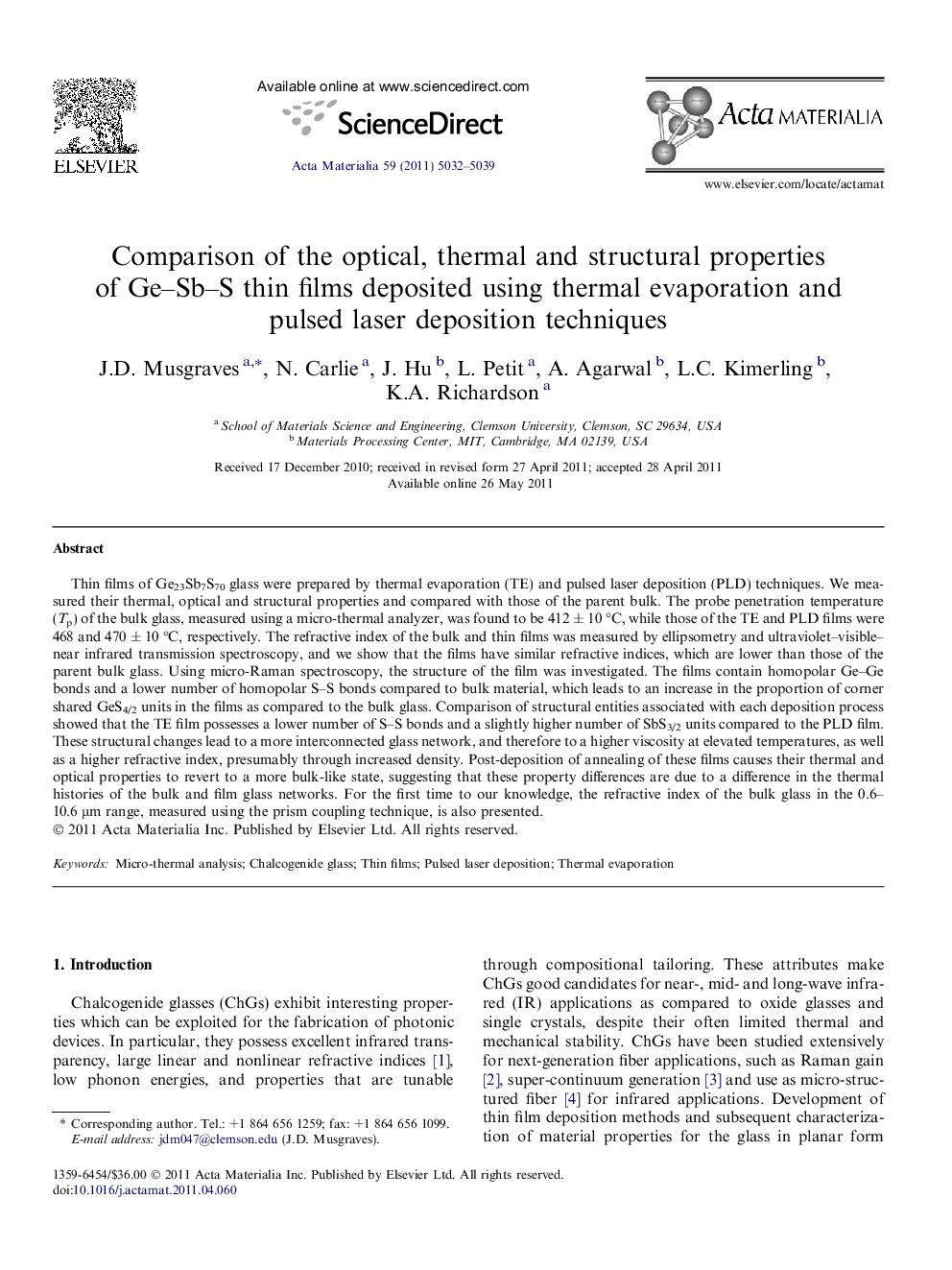| Article ID | Journal | Published Year | Pages | File Type |
|---|---|---|---|---|
| 1447081 | Acta Materialia | 2011 | 8 Pages |
Thin films of Ge23Sb7S70 glass were prepared by thermal evaporation (TE) and pulsed laser deposition (PLD) techniques. We measured their thermal, optical and structural properties and compared with those of the parent bulk. The probe penetration temperature (Tp) of the bulk glass, measured using a micro-thermal analyzer, was found to be 412 ± 10 °C, while those of the TE and PLD films were 468 and 470 ± 10 °C, respectively. The refractive index of the bulk and thin films was measured by ellipsometry and ultraviolet–visible–near infrared transmission spectroscopy, and we show that the films have similar refractive indices, which are lower than those of the parent bulk glass. Using micro-Raman spectroscopy, the structure of the film was investigated. The films contain homopolar Ge–Ge bonds and a lower number of homopolar S–S bonds compared to bulk material, which leads to an increase in the proportion of corner shared GeS4/2 units in the films as compared to the bulk glass. Comparison of structural entities associated with each deposition process showed that the TE film possesses a lower number of S–S bonds and a slightly higher number of SbS3/2 units compared to the PLD film. These structural changes lead to a more interconnected glass network, and therefore to a higher viscosity at elevated temperatures, as well as a higher refractive index, presumably through increased density. Post-deposition of annealing of these films causes their thermal and optical properties to revert to a more bulk-like state, suggesting that these property differences are due to a difference in the thermal histories of the bulk and film glass networks. For the first time to our knowledge, the refractive index of the bulk glass in the 0.6–10.6 μm range, measured using the prism coupling technique, is also presented.
